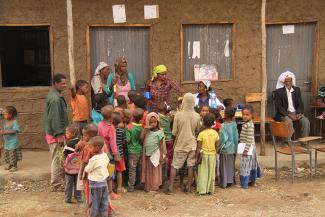Demographic dividend
Demographic change as a driver of economic growth

In such a setting, young workers can accumulate assets, and if the savings are productively invested in the country, the economy grows.
Several things must happen for a demographic dividend to materialise. It is not enough to have a comparatively small share of dependent people who need support. There must also be enough jobs for the large demographic group of 15- to 65-year-olds. Only then will increasing disposable incomes lead to higher savings.
Governments can benefit from such an economic boon and harness it for development. Higher productivity and higher incomes can then facilitate more elaborate care for the elderly. In the long term, though, the ageing of society means that a diminishing share of working people has to support a growing number of pensioners, so new problems arise. Whether African countries will benefit from demographic dividends remains to be seen.












